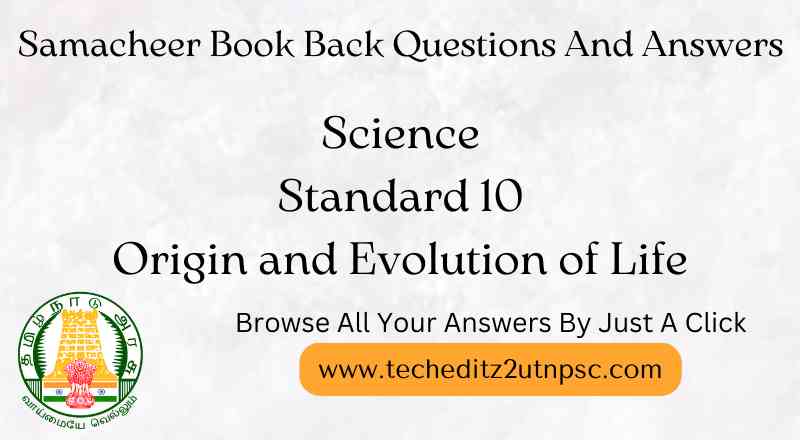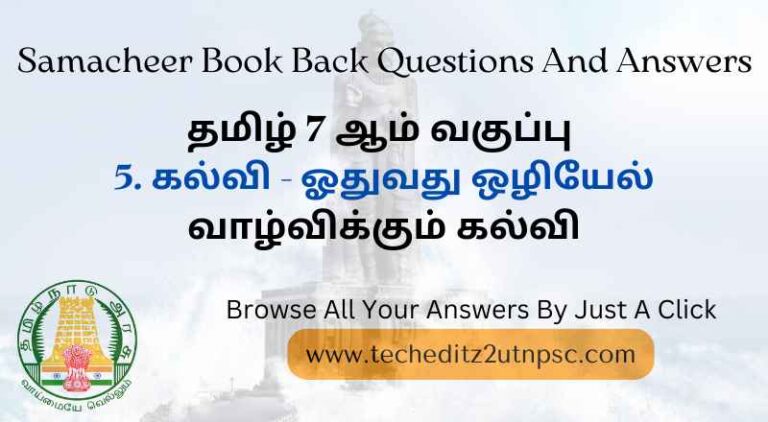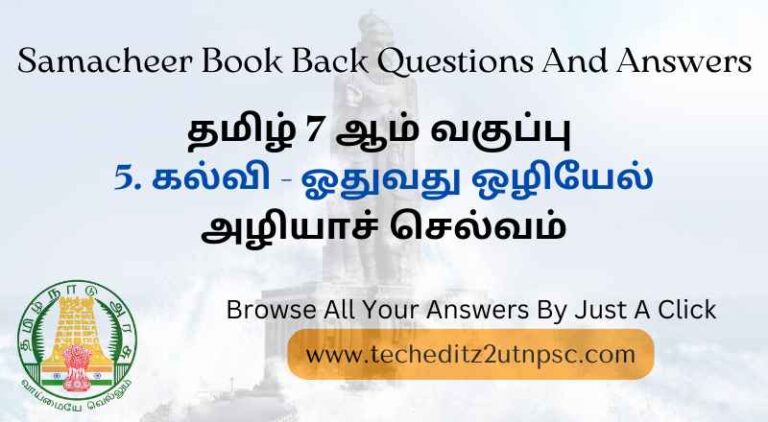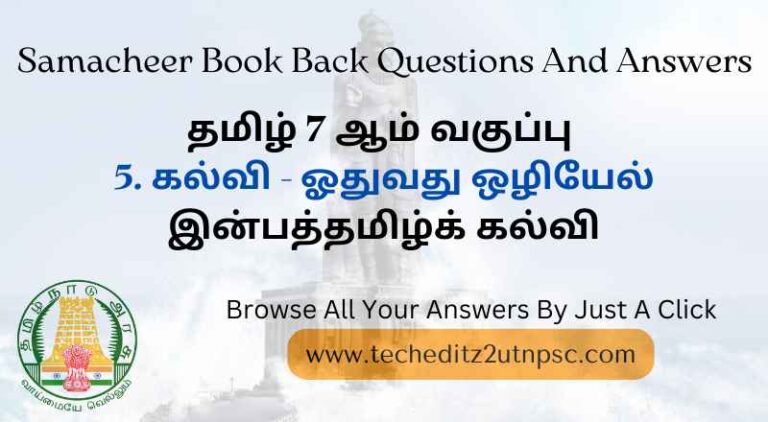support@techeditz2utnpsc.com | 8300-921-521

Origin and Evolution of Life
Samacheer Book Back Questions And Answers For Science Standard 10 “Origin and Evolution of Life“
I. Choose the correct answer:
1. Biogenetic law states that _____.
a) Ontogeny and phylogeny go together
b) Ontogeny recapitulates phylogeny
c) Phylogeny recapitulates ontogeny
d) There is no relationship between phylogeny and ontogeny
2. The ‘use and disuse theory’ was proposed by _____.
a) Charles Darwin
b) Ernst Haeckel
c) Jean Baptiste Lamarck
d) Gregor Mendel
3. Paleontologists deal with
a) Embryological evidences
b) Fossil evidences
c) Vestigial organ evidences
d) All the above
4. The best way of direct dating fossils of recent origin is by
a) Radio-carbon method
b) Uranium lead method
c) Potassium-argon method
d) Both (a) and (c)
5. The term Ethnobotany was coined by
a) Khorana
b) J.W. Harsbberger
c) Ronald Ross
d) Hugo de Vries
II. Fill in the blanks:
1. The characters developed by the animals during their life time, in response to the environmental changes are called _____.
2. The degenerated and non-functional organs found in an organism are called _____.
3. The forelimbs of bat and human are examples of _____ organs.
4. The theory of natural selection for evolution was proposed by _____.
Answers:
1. adaptation
2. vestigial organs
3. homologous
4. Charles Darwin
III. State true or false. Correct the false statements
1. The use and disuse theory of organs’ was postulated by Charles Darwin.
2. The homologous organs look similar and perform similar functions but they have different origin and developmental pattern.
3. Birds have evolved from reptiles.
Answers:
1. False (The Use and Disuse theory of organs was postulated by Lamarck)
2. False (The homologous organs look dissimilar and perform different functions but they have similar origin and developmental pattern)
3. True
IV. Match the following:
1. Atavism A. caudal vertebrae and vermiform appendix
2. Vestigial organs B. a forelimb of a cat and a bat’s wing
3. Analogous organs C. rudimentary tail and thick hair on the body
4. Homologous organs D. a wing of a bat and a wing of an insect
5. Wood park E. radiocarbon dating
6. W.F. Libby F. Thiruvakkarai
Answers:
1. C
2. A
3. D
4. B
5. F
6. E
Visit Our YouTube Channel For More Free Videos: Click Here


